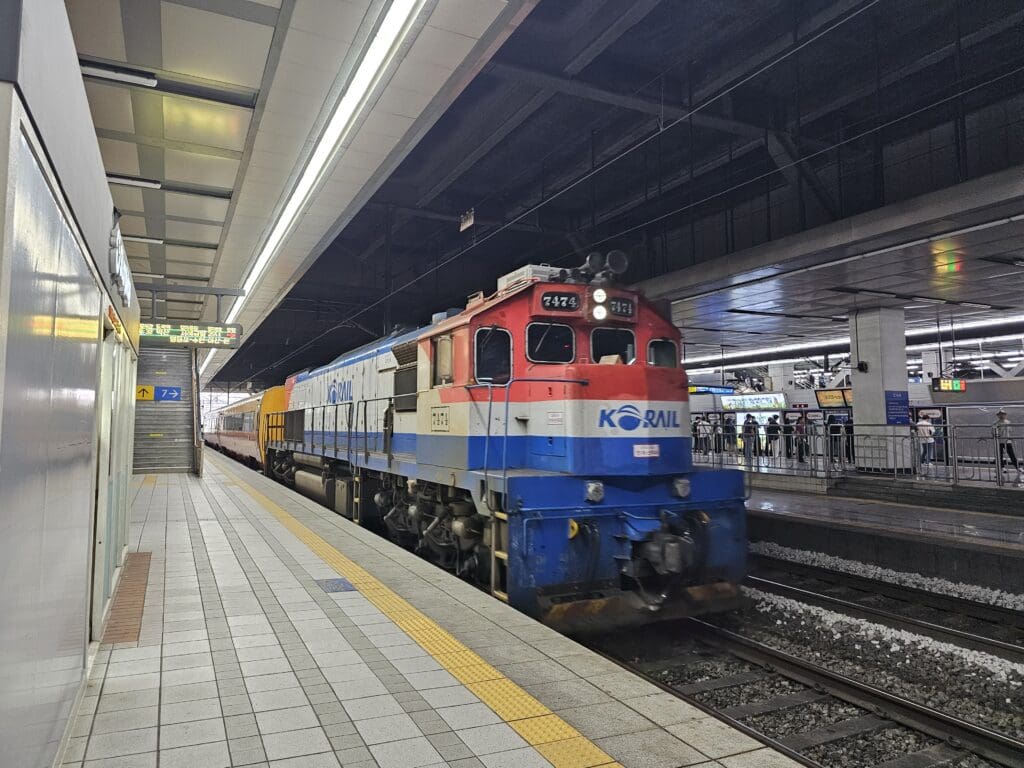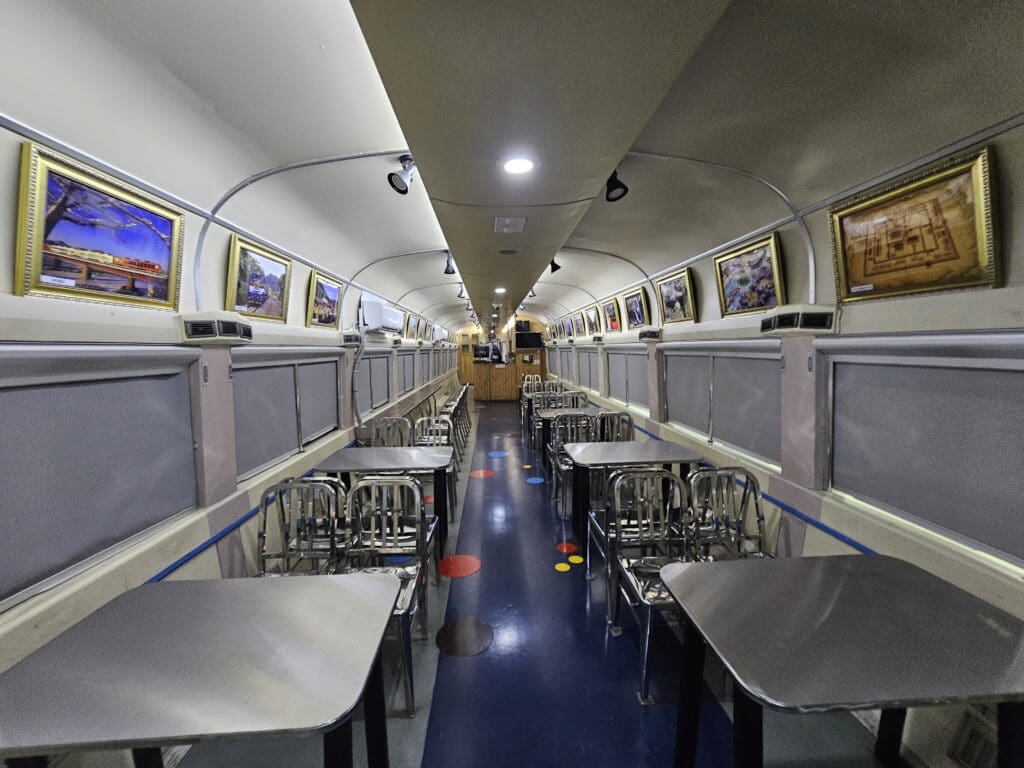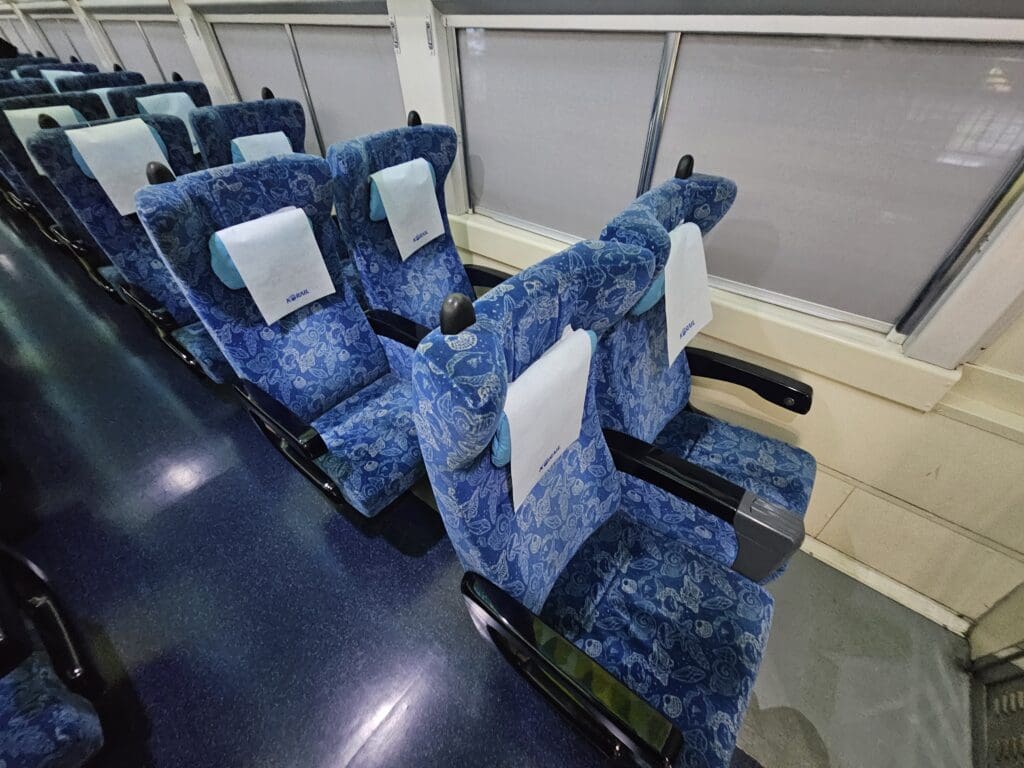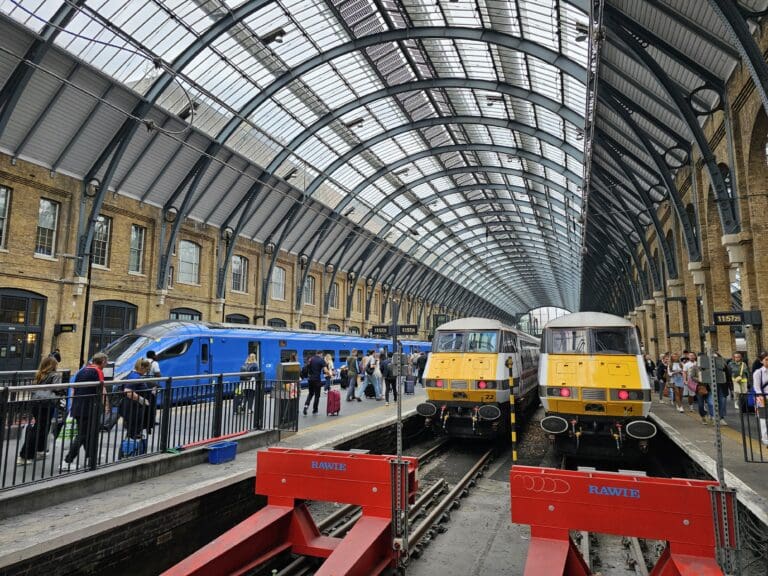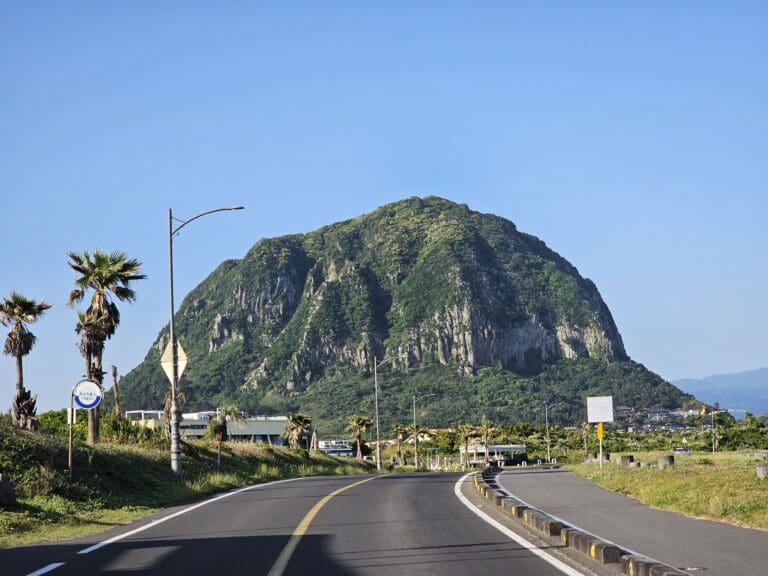An Interesting Korean Tourist Train Journey: Catching the S-Train from Yeosu to Seoul

If you find this interesting, you may enjoy my guide to Korean train travel.
In Britain, special railway excursion trains are a familiar sight. Each week, a handful of these unique services are woven into the tight schedule of regular operations, offering passengers distinctive travel experiences. These excursions cater to various interests, from transporting passengers to special events like horse races or Christmas markets to offering luxurious journeys on Pullman trains. Many are focused on attracting railway enthusiasts with the allure of unique rolling stock and rare routes, making them a cherished aspect of Britain’s rich railway tradition.
Thousands of miles away in South Korea, the concept of such services is similar, yet different. In the 2010s, working with local tourist boards, state-owned railway operator Korail began to examine ways in which it could revitalise under-utilised railway lines across the country, boost passenger numbers, promote regional tourism and make use of the surplus older railway carriages that were no longer required thanks to the introduction of the ITX and KTX services. Korail’s answer to all of these was to develop a new classification of services, tourist trains. Onboard, each of Korail’s tourist trains features a unique interior that gives them a unique identity that is usually linked to the route that they serve.
Some came in the form of long distance routes across the country where the experience is focused on the onboard experience, such as karaoke, tea ceremonies, magic shows and even foot spas! However, as you will read below, during my journeys on two of these services in 2024, I found that these unique onboard experiences and no longer undertaken onboard. Meanwhile, other services trundle on scenic routes deep in the heart of the Korean mountains or along its coasts, many of these enable passengers to disembark at the services’ stops and head off on a local tour before returning to the train. Undoubtedly the most famous of Korail’s tourist trains was its DMZ Train. This train ran from Seoul to Dorasan where passengers would disembark and be taken on a tour around the Demilitarized Zone. Unfortunately, this service stopped in 2023 when Korail retired the diesel railcar operating the route. With a portion of this not being electrified and lacking any similarly sized diesel multiple units, it is uncertain as to if or when this route will return.



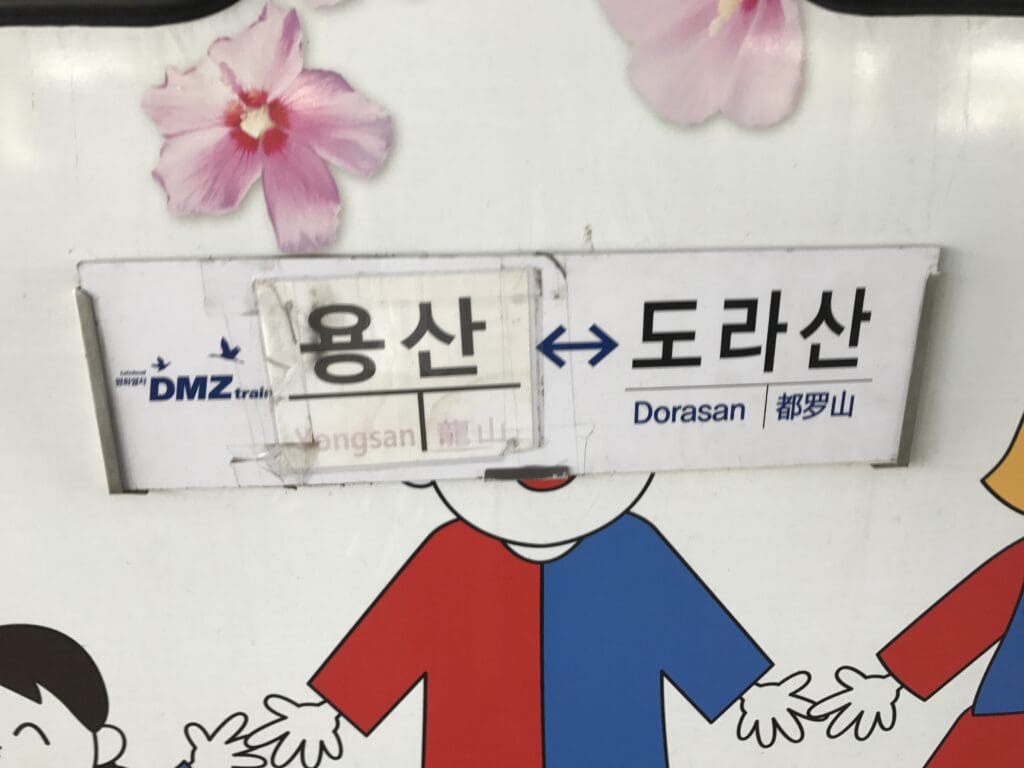


In July 2024, I decided to spend a long weekend in the city of Yeosu. Located on Korea’s southern coastline in the province of South Jeolla, the city is a popular weekend break destination, especially during the warm summer months. Having travelled down to Yeosu on a sleek and quick KTX Sancheon service, a journey which took around three hours, I decided to return to the Korean capital in a more leisurely manner. Upon undertaking a search for trains on Korail’s website, I discovered that my schedule aligned well with one of Korail’s tourist trains, the Namdo Sea Sightseeing Train, more commonly known as the S-Train.
As one of Korea’s first tourist trains, the S-Train commenced operation in September 2013 on two routes, one from Youngsan in Seoul to Yeosu Expo Station, and another from Busan to Boseong. Today, both services remain operational although one now runs between Seoul and Yeosu Expo, whilst the other runs between Busan and Gwangju. These trains consist of a rake of ex-Mugunghwa carriages hauled by a locomotive. Originally, these were hauled by diesel locomotives painted in a livery that resembled the Joseon Navy’s turtle ships, although thanks to electrification over the past decade, these are now hauled by standard Korail liveried electric locomotives. Like other tourist trains, the services’ carriages have been customised and given an identity that draws inspiration from the route and the towns the service passes through, whether it be an old-school games room to a tea ceremony room where passengers sit on raised platforms on either side of the aisle. Needless to say, as a fair-weather rail enthusiast, I had to book myself onto one of these services!
Despite their quirkiness, long distance tourist trains are not ideal for those wanting to get to their destination as quickly as possible. Like the Mugunghwa services that operate between Seoul and Yeosu, the S-Train stops at almost every town and city along its route. This means that the S-Train is around slower than the KTX for those needing to get between Seoul and Yeosu, and, is only marginally cheaper than such services. Nevertheless, not being particularly pressed for time and having wanted to sample a tourist train for quite some time, I decided that this was a sacrifice that I was willing to make and soon went ahead and booked my ticket via the KorailTalk app. On a side note, tickets for tourist trains are booked in the exact same way as tickets for any other rail service in Korea – more information on this can be found here!
S-Train Prices and Schedule
| Direction | Origin Depart | Destination Arrive | Journey Time | Ticket Cost (one-way / adult) |
| Seoul – Yeosu Expo | 08:03 | 12:56 | 04:53 | 45,200 KRW |
| Yeosu Expo – Seoul | 17:22 | 22:15 | 04:53 |





The Journey
Following a restful weekend by the seaside, it was time to return to Seoul. After a hearty lunch, I decided the best thing to do considering the summer heat was to hit up a café before lounging about by the hotel pool to avoid building up too much of a sweat before my long journey back to the Korean capital. Unlike in some countries, the process of taking a train in Korea is incredibly straightforward and you quite simply just need to show up at the station and board your train, with no need for any sort of security or identity check. Furthermore, seeing as I had purchased my ticket via Korail’s app, this was all loaded up on my phone in rare case that somebody would want to check this during the journey.
Despite the simplicity of taking a train in Korea, eagerly awaiting my evening S-Train ride through Korea, I decided to head to the station with around forty minutes to go until my train was scheduled to depart. From the hotel, I took made a quick hop in the taxi to Yeosu Expo Station. This station was opened in 2009, replacing an older station, and as its name would suggest, this was constructed for Expo 2012 and is located right opposite the city’s exposition halls. This is by no means Korea’s largest station, however, this contains an ample number of facilities including a convenience store and a couple of restaurants where you can either sit in to enjoy your meal or take this away and have it on your train. The latter is a good option considering Korean trains’ lack of food offerings onboard.



Considering the length of the journey, I decided to be on the safe side and purchased a roll of kimbap to go that I could enjoy during the ride. With this in hand, I plonked myself down in the clean and tidy waiting area before heading back outside into the intense summer head and onto the platforms. With around fifteen minutes to go until the train was scheduled to depart, a pre-recorded announcement rang out in Korean and English and boarding for the service began. Heading onto the platform, I soon caught sight of the distinctively liveried four-carriage train that would be taking us up to Seoul. Leading this was a large and powerful, if not somewhat dirty Class 8200 electric locomotive. These may look a little familiar to Europeans as they are essentially Siemens EuroSprinter locomotives that were manufactured under licence by Hyundai Rotem in Korea between 2002 and 2008.



After heading to the front of the train to snap a photo of the meaty engine, I made my way back to the carriages to board. Whilst not quite as dated as the interior of a typical Mugunghwa train, the interiors of these four carriages did seem to be a little dated in their appearance and whilst the interior was most certainly unique and a little more exciting than that of your typical train. Most of the space in the carriages was filled by very large, chunky, well-padded and spacious seats arranged in a 2-2 configuration, with these being similar to those onboard Mugunghwa services. However, around a third of one carriage was taken up by booths type seating, half of another carriage featured the aforementioned ‘tea ceremony’ area along with a refreshment counter, although it was clear that this is no longer used, whilst a large cycle storage compartment could be found in the rearmost carriage.







Examining the train, I have to say that this was clean and comfortable, however, in places this did seem to be a little worn. Coupled with the abandoned refreshment counter and the halting of onboard entertainment, it seemed as if Korail were not funding the S-Train in the same way that they once had done. Meanwhile, whilst a little subjective, I did find some of the designs on board to be a little garish and tacky.
Returning to the journey, that evening the train pulled away from Yeosu Expo Station right on time and we soon left the city behind and headed out into the mountainous countryside of South Jeolla. Onboard, the train seemed to be no more than a quarter full and remained rather quiet for the entire journey to Seoul. Meanwhile, it seemed that I was perhaps the only passenger riding the S-Train owing to its special nature, with those around me taking the form of solo travellers, families who did not seem to be amused by the train’s novelty and uniformed soldiers undertaking their military service and presumably on their way back to camp after a weekend of leave.

Unlike the likes of ITX and KTX trains, I generally find that the ride on Korail’s locomotive-hauled services is often not particularly smooth, usually accompanied by plenty of bumps and jolts as the train accelerates and decelerates. Upon leaving Yeosu, it wasn’t long before the train could be felt decelerating as we approached our first station stop, and it seemed that we ended up stopping on average every twenty minutes or so to drop off and pick up passengers. One interesting feature was that the pre-recorded announcements played before each stop noted an interesting fact or story about each station, however, these were made in Korean only.






Those who weren’t particularly entertained by the novelty of travelling on a tourist train would have likely been a little bored. Unlike a number of other Korail services, there is no entertainment, wi-fi, or plug sockets offered, and thus I would advise passengers to bring their own entertainment along with them. In addition, unlike other Korail trains, onboard, there were no vending machines installed on the S-Train and thus absolutely no form of refreshments was offered onboard.

Looking outside, the skies gradually began to darken, with the sun setting at around 2000, by which time we were around halfway into the journey and approaching the city of Daejeon. Once darkness fell, I decided to occupy myself by watching a few things on my phone before having a short nap. Eventually, we reached Seoul, bringing an end to my journey on the S-Train.


Summary
Whilst I was happy to have sampled the S-Train, this was not quite the experience that Korail marketed on their website. Specifically, there was no entertainment, and nothing particularly exciting about my journey other than the somewhat novel interior of the train. With everything considered, I don’t think that I would take the S-Train again. Not there was anything terrible about my experience, however, if I happen to find myself travelling to Yeosu by train again, I would almost certainly pay the extra two thousand or so won in order to catch the KTX.
Finally, I did experience a very short journey from Seoul to Suwon on another tourist train two weeks later, the West Sea Golden Train, otherwise known as the G-Train which runs from Yongsan to Iksan along Korea’s western coastline. Admittedly, I found the interior of this train to be slightly less garish and in better condition. However, once again, there did not seem to be any special entertainment provided onboard this service. Photos of this can be found below.
